TL;DR: Smart drugs work, they just won’t make you a genius. Categories from safest to least safe include nutritional-based, adaptogens, stimulants, and designer drugs. Many designer drugs are not well understood yet. Nootropics may improve energy levels and mood, and/or memory and learning rate.
Let us just start by saying that, we are not doctors. This article is not medical advice, nor should it be treated as such. This article is purely for educational purposes. Finally, we do not condone the use of any illegal substances nor the use of any prescription drug without a say-so from your physician.
| Nutrient-Based | Adaptogens | Stimulants | Designer |
|---|---|---|---|
| B Vitamins | Ashwagandha | Caffeine | Modafinil |
| Omega-3 (DHA) | Rhodiola | Microdosing Psychedelics | Piracetam |
| Medium Chain Triglycerides | Bacopa Monnieri | Choline | |
| L-Theanine | Ginkgo Biloba | Noopept | |
| Creatine | Lion’s Mane | ||
| Acetyl-L Carnitine |
Introduction
Back and forth, back and forth, you dispassionately mop the floors of a University you’d never hope to attend. Being a common janitor, you feel doomed to remain lower class the rest of your days. You’ve always felt you could do more, but who are you kidding, really? Maybe you won a chess game or two back in middle school, but you weren’t no M.I.T. kid, that’s for sure.
As you mop the last leg of the empty, dimly-lit hallway, you spot one of those highbrow math problems the professors leave on the chalkboard to find which students will brown nose them that week. As you’re looking at this particularly exotic problem, all of a sudden the light of genius sparks in your mind, the symbols speak to you, and a flood of epiphanies flow forth through the chalk piece you swiped as you finish off the problem in a matter of seconds.
[a]
Is it the modafinil you took this morning, or are you starring in Good Will Hunting?
Neither.
You realize you’ve been daydreaming, the floor still needs mopping, and you’re still not a genius.
The genius archetype is ancient, and as our society speeds up it seems to collect at the forefront of our attention. Limitless, Lucy, and even classic books like Flowers for Algernon orbit the question of whether there is some higher capacity for intelligence somewhere in there.
Is there some way to expand and unlock a deeper potential, or is it mostly limited to our day dreams? Is there a middle ground that will give average joes like you and me enough of an edge to make a difference day to day?
The nascent 2 billion dollar nootropic industry seems to think so [2].
What Are Nootropics?
Nootropics are drugs or nutrients that increase mental performance in healthy individuals. The idea with nootropics is actually to boost an already fully functional mind to a higher level of intelligence. People use nootropics to gain an edge in the workplace, for socializing, and sometimes because it just feels good to be a little sharper.
Categories of mental performance include attention, language, learning, memory, and perception. Nootropics may affect any of these capabilities. In addition, some nootropics improve mood, and increase resilience to stress, which seems related to having more energy or motivation. However they work, they produce a higher level of performance for an individual in some way.
[b]
Nootropics increase working memory, reaction times, alertness, energy and stamina, and some even increase general intelligence. However, if you’re hoping to be Bradley Cooper in Limitless, you’ll probably have to wait a while.
The four categories of nootropics below are nutrient-based, adaptogens, stimulants, and designer drugs.
Risks of Nootropics
Besides making your competition jealous, or being labelled a cheater by Duke University, what risks should one be aware of?
First off, there are many types of nootropics, and some come with more downsides than others. Some cause addiction, others stimulate you and leave you with a crash, some might harm your body or brain, and others just stop working. Some appear to come with little to no downside at all.

While there are nootropics that reach back to antiquity, chemists are also coming out with newly minted synthetic nootropics every year. Nootropics is a continually evolving field. The newer and less known, the more risk we take in using them.
For this reason, we have listed the below drugs in order of mildest, most natural, and safest down to the more powerful, synthetic, and less well known. Typical doses are listed as well as potential long term downsides of using the nootropic.
The Best Nootropics
Everyone has different brain chemistry and preference when it comes to nootropics. Some people like the stimulation of caffeine, others prefer the soothing and creative effects of L-theanine. The four categories represent drugs with different safety tolerances and types of effects.
Nutrient-based nootropics are usually the safest, adaptogens seem good for stress and boosting energy though not to be used every day most likely. Stimulants are stronger typically, and tolerance and addiction may develop. Designer drugs are an emerging area, and aren’t understood well yet, but show a lot of promise.
Note: If you’re consuming foods or junk that mess with your biochemistry, it would be more important to remove those first. Read about our top no-no’s in terms of diet and chemical exposure here.
Note: Before taking supplements, read our recommendations on choosing safe ones here.
Nutrient-Based Nootropics
[c]
Nutrient based nootropics are the best foundation upon which to build a smarter mind. All other nootropics will rely to some degree on your nutritional status. Without a good diet, many of these nootropics will be much less effective. See our articles on nutrition to brush up.
Once you’ve established a good basic diet, try some of the nutrient-based brain boosters below.
- B-Vitamins
[h]
B vitamins play crucial roles in cognition, helping break down neurodegenerative compounds like homocysteine, and are directly involved in the KREBS cycle, which help mitochondria make energy.
When choosing B vitamins, look for the methylated versions or you may just pee most of it out. Do your research and choose a high-quality brand. It’s not worth penny pinching on this one.
In addition, B vitamins provide precursors to other nootropics like Choline, discussed below. Choline works by increasing acetylcholine production in the brain, which requires B1 and B5 to be made. Some find choline doesn’t work as a nootropic until B vitamins are supplemented or consumed in the diet in enough quantity. [9]
Like omega-3s discussed next, B vitamins’ ability to enhance cognition may be more related to filling deficiencies than improving an already well nourished brain.
Good For:
-Overall brain health
-Protection from neurodegenerative diseases
-Brain and body energy
Downsides:
-May keep you awake if taken late in the day
-Must be taken with food if using a supplement
Recommended Daily Intakes:
-B1: 1mg
-B2: 1mg
-B3: 16mg
-B5: 5mg
-B6: 1 mg
-B9: 0.400 mg
-B12: 2 micrograms
A half or quarter ounce of grass fed beef liver has high levels of B and other vitamins, and some consume it raw, even swallowing small amounts whole like a pill.
Note: supplements may often contain up to 100x the above RDIs safely, and may be more effective at high doses. Seeing as B vitamins are water soluble, it’s hard to consume too much to really be harmed. You’ll just be peeing your hard earned $ down the drain, especially if you use non-methylated B vitamins.
- Omega-3 (DHA)
[i]
Omega-3s are a type of fat we need to eat to survive, and are especially important for our cell membranes and proper brain functioning. It shows promise in improving cognitive functioning in adults, and reducing cognitive decline in seniors.
Of the three types: DHA, EPA, and ALA, DHA is most important for mental functioning, and makes up to 8% of total brain weight. DHA has the ability to increase levels of BDNF – a brain growth hormone – in the brain, and taking it as a supplement is linked to improved thinking, memory, and reaction times for those with low DHA intake. It appears that lack of DHA causes cognitive impairment more than including it increases cognitive performance. [8] Still, many are deficient so make sure you’re not one of them.
ALA, the omega-3 form found in plant foods actually has no important impact on omega-3 levels in the body, unfortunately; our bodies aren’t able to convert it well.
Good for:
-Overall brain health
-Protection from neurodegenerative diseases
Downsides:
-Taking too much can make your blood too thin (3 – 5 or more grams / day)
Typical dose: ~1g DHA daily
-100 grams of salmon has 1 gram of DHA.
- Medium Chain Triglycerides (MCTs)
[j]
These are triglycerides (fat) of medium length, and are easily broken down in our bodies for energy. This is one of the key ingredients in Bulletproof coffee. These fats are found in high amounts in certain naturally found fats like coconut oil, but can be purchased in liquid form in concentrated amounts. They nudge your body into a ketogenic state because these fats are so easy for your body to use.
Typically, your brain runs on only glucose, but it can also run partially on ketones as a hybrid. Using ketones for energy reduces oxidative stress and protects against neurodegenerative diseases. It also enhances blood flow in the brain and may provide a higher overall power output in brain cells. MCT oil supplements have specifically shown large improvements in logical memory tests and digit-symbol coding tests. [1] C8 and C10 MCT forms appear particularly effective.
Good for:
-Increased mental energy
-Increased mental clarity
-Reduced mental aging
-Giving a mental boost during prolonged fasting periods
Downsides:
-Digestive upset with too much liquid supplement (start with smaller doses, and work up)
-Weight gain from too much total calories for your needs
Typical dose: 5 – 70 grams (1 tbsp of coconut oil is about 7g, but pure MCT oil may be more effective because it has more C8 and C10 MCT)
- L-Theanine

[k]
L-theanine is an amino acid known to help calm the mind down and boost creativity, but does not cause drowsiness. It actually increases the amount of alpha brain waves, which help us slow down and relax to reach a calmer and more productive state. It increases GABA, dopamine and serotonin levels in the brain.
L-theanine also works synergistically with caffeine, and both are found in tea. This makes caffeinated teas, notably green tea or matcha, a good choice as a mild nootropic.
Good for:
-Calming and mood enhancement, benefits depression and anxiety
-Creativity
-Pairing with stimulants like caffeine (typically 1:2 ratio of caffeine:L-theanine)
Downsides:
-Relatively mild
Typical dose: 50 – 200mg daily (one cup of tea contains roughly 25mg)
- Creatine
[l]
Creatine is similar in structure to many amino acids and is found mostly in our muscle cells, and
some in our brain and other organs. It is found in most meats and other animal foods. Taking creatine powder for strength training and bodybuilding is already popular for its role in generating energy, especially for short term bursts. Read more on creatine for athletics here.
Less well known is its ability to boost working memory and even general intelligence, unlike most other nootropics. [6][7] Creatine seems to just allow you to deliver more energy – to your muscle cells or your brain cells. Furthermore, creatine has over a decade of research behind it in hundreds of studies supporting its safety and efficacy.
Good for:
Mental and physical energy
Working memory
Increased general intelligence
Downsides:
-Water weight gain
-Possible digestive, liver or kidney problems
Typical dose: 5g daily (note 1kg of red meat contains about 5g of creatine. You likely don’t need more than 5g per day, though some people take large doses)
- Acetyl L-Carnitine
[m]
Like L-theanine, L-carnitine is an amino acid. It is found mostly in animal foods and in nearly all cells in the human body helping them produce energy. Acetyl-L carnitine is a form that crosses the blood-brain barrier more easily and the acetyl group can be used to help create acetylcholine, an important neurotransmitter. Carnitine often gives us a mental and physical energy boost because it helps our mitochondria burn fat for fuel. Read more on its athletic benefits here.
Acetyl-L Carnitine supports learning, memory, attention, and mental energy. It supports levels of several neurotransmitters and exhibits neuroprotective functions as well. [10]
Good for:
-Increased mental and physical energy
-Improved learning and attention
-General mental health
Downsides:
-Digestive problems
-Headaches
-Trouble sleeping
Typical dose: 500 – 2500 mg daily
Those who eat meat typically consume 60 – 180mg per day. Vegans consume about 10-12mg per day. Taking more than 500 mg per day may result in some of the downsides above.
Adaptogen-Based Nootropics
[d]
Adaptogens adapt the way our bodies manage stress and often come with other related benefits like a reduction in anxiety, and an increase in physical and mental endurance. They’re usually plants of some kind.
- Ashwagandha

[n]
Ashwagandha translates from Sanskrit to smell of the horse, relating to strength and the unique smell it gives off. If that doesn’t clear things up for you, it is a strong, ancient adaptogen that increases stress resilience and reduces anxiety, especially for those with psychological disorders. It may improve overall well being by reducing cortisol levels and can even lower blood sugar levels. [5] True to its name, it does appear to increase both muscle mass and strength. [11]
Ashwagandha has a high concentration of a class of hormone-acting molecules called withanolides, which may have anti-cancer properties. It also appears to increase sperm count and motility as well as produce a slight boost in testosterone. [11] Tack onto this its ability to protect the brain from free radicals and improve reaction time and memory and it seems like quite the powerhouse.
Good for:
-Stress, anxiety and depression
-Concentration
-Energy
-Protection from degenerative brain diseases, especially memory
Downsides:
-Long term effects unknown
-Not safe for pregnant or breastfeeding women
-Potentially unsafe for those with autoimmune disorders
Typical dose: 500 mg
- Rhodiola

[o]
A root used for centuries in Russia and Scandanavian countries for anxiety, fatigue, and depression, rhodiola helps increase resilience to stress and improves well being [12]. It increases energy levels for cognition as well as physical performance and increases physical endurance. [5][12] One study in students showed an 8% higher test score than placebo groups [12]. In addition, like ashwagandha, it may help lower blood sugar levels and reduce tumour and cancer growth.
It is quite safe and side effects are rare. Taking about 25g would be harmful, however, which is 50x the recommended dose.
Good for:
-Increased energy
-Stress resilience
-Improved sense of well being
Downsides:
-Slightly stimulating, likely shouldn’t be taken before bed
-Some may experience drowsiness, stomach upset, or headache
Typical dose: 500 mg, best taken on an empty stomach
- Bacopa Monnieri

[p]
A staple medicine in traditional Ayurvedic medicine (Eastern), bacopa monnieri is used to improve memory, reduce anxiety and even treat conditions like epilepsy. It has shown in mice to improve spatial learning and memory, and to increase length of dendrites (the branches at the end of neurons). One twelve week study showed that taking 300mg of bacopa monnieri significantly improved learning rate and visual processing speed as well as memory. [13]
A class of compounds called bacosides in this plant is thought to be behind its effects. These compounds show antioxidant abilities, neutralizing free radicals that accelerate aging and lead to neurodegenerative diseases like Alzheimer’s and Parkinson’s. It also may lower blood pressure and have anticancer properties like the two adaptogens above. [13]
Good for:
-Learning speed
-Memory
-Neurodegenerative diseases
Downsides:
-Not well understood side effects, not recommended for pregnant women
-May interact with medications
Typical dose: 300 – 450 mg
- Ginkgo Biloba

[q]
Ginkgo Biloba is a tree native to China, and is the only known survivor of an ancient order of plants. It is thought to open channels of energy flow to different organs. This may be explained by its ability to increase blood flow to these regions, which could be due to the fact that it raises nitric oxide levels (12% in one study). Likely, for this same reason, Ginkgo Biloba shows benefits for heart health, brain health, and stroke prevention. It also has been researched for any benefits related to anxiety, stress, and cognitive decline, but the results are still inconclusive. [14]
Further areas of research showing promise include ginkgo biloba’s ability to help with depression, vision, headaches, asthma, PMS, and sexual dysfunction. [14]
It contains powerful antioxidants, including flavonoids and terpenoids, which may be behind its health effects. [14]
Good for:
-Increasing blood flow
-Possible anxiety and stress reduction
Downsides:
-Possibly interacts with medications
-Nausea, headache, digestive problems in some
-Allergic reaction in some
Typical dose: 200 mg throughout the day
- Lion’s Mane
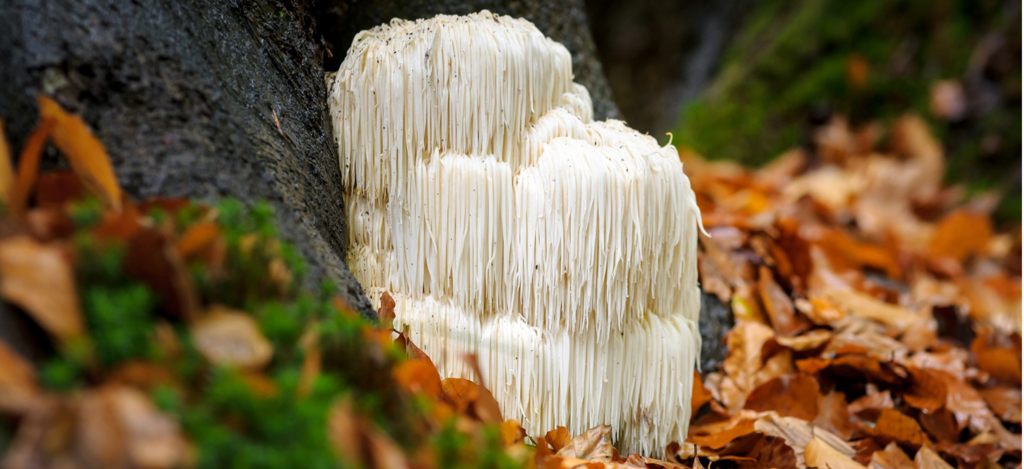
[r]
Lion’s mane is a mushroom used in Eastern dishes and as a medicine. It stimulates nerve growth factor, which is a protein that improves memory, mood, and learning, protects and helps create new brain cells, and may reduce depression symptoms. [5] It also shows promise in protecting from neurodegenerative diseases, and helps with memory impairment. It has anti-inflammatory effects that can reduce anxiety and depression symptoms. It also appears to help prevent the growth of the parasitic bacteria H. Pylori responsible for stomach ulcers.
Like with the other adaptogens, lion’s mane reduces inflammation and oxidative stress, boosts the immune system, prevents the spread of cancer, and helps manage diabetes.
Lion’s mane contains two active categories of compounds thought to be responsible for its effects: hericenones, and erinacines.
Good for:
Boosting brain cell growth, slowing neurodegenerative diseases
Mild anxiety and depression
Preventing several diseases
Downsides:
-Rarely, allergies may occur
Typical dose: 2 grams daily
Stimulant-Based Nootropics
[e]
Stimulants speed up your central nervous system and increase your focus and attention, as well as working memory. Too much stimulation can be detrimental to performance in the long run, and you’ll develop a tolerance to them with repeated daily use.
Read more on stimulants in our intro to drugs here.
- Caffeine
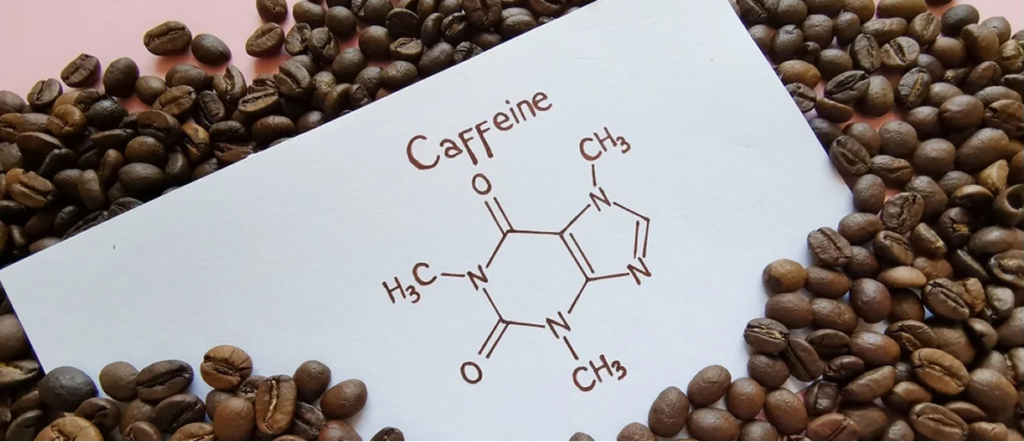
[s]
Caffeine is the stimulant nootropic of choice for most office workers. Widely used across the globe, it is found in the coffee and tea plant and works by making you feel less tired than you actually are. This is part of the reason why it is especially effective when you’re tired. It enhances alertness and attention, decreases reaction time, and may also improve working memory to an extent. [4] Take a deeper look in our article on caffeine here.
Good for:
-Increased alertness and focus, especially when tired
-Faster reaction time
-Working memory
-First dates
Downsides:
-Addiction and dependence
-Anxiety, especially at high doses
-“Crashes” after effects wear off
-Mold and mycotoxins in poorly processed coffee, digestive irritation
Typical dose: 50 – 200 mg daily – subject to tolerance (one cup of coffee contains about 120mg)
- Microdosing LSD or Psilocybin Mushrooms
Reported effects of microdosing LSD or magic mushrooms [3]
Taking sub-hallucinogenic doses of hallucinogens like LSD or magic mushrooms appears to have gained popularity in silicon valley for enhanced creativity and productivity. The image above is based on a study of 278 microdosers using qualitative measurements. From this, enhanced mood, creativity, focus, energy, and confidence appear to take effect, though some people experience negative effects, most notably physical discomfort. This is still a very new area, and we do not recommend illegal or unsafe use of psychedelics.
Good for:
Improved mood
Increased focus
Increased creativity
Downsides:
Tolerance builds quickly, rarely used on a daily basis
Potential for physical discomfort
Legality
Typical dose:
-0.10 grams of psilocybin mushrooms
-10 micrograms of LSD
Designer Nootropics
[f]
Designer nootropics are made in a lab, and are created all the time. They started being created in the 60s mostly, and continue to gain popularity to this day. LSD made in 1938, modafinil made in the late 70s and popularized in the 90s, and piracetam made in 50s or 60s are some early examples. There are many dozens today that are popular, and they are often stacked with each other.
- Modafinil
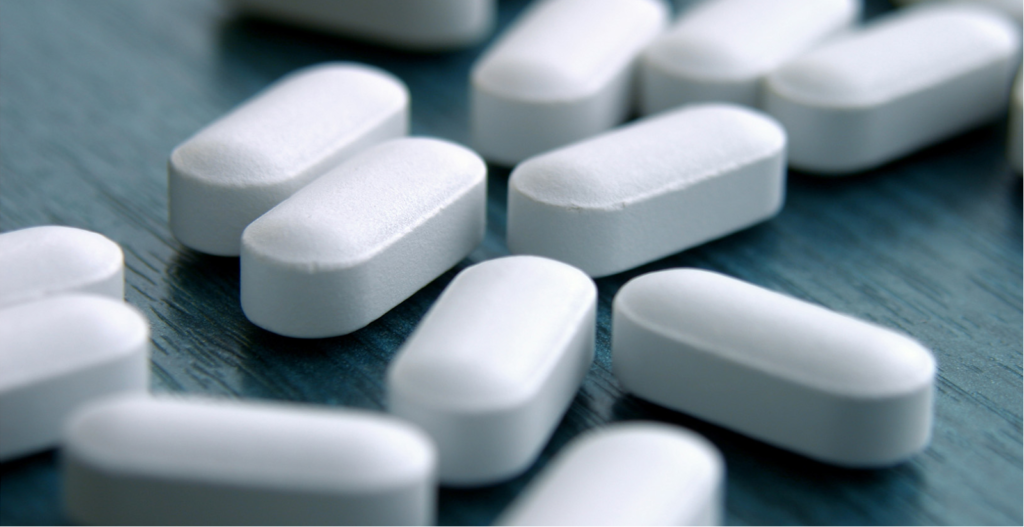
[t]
Modafinil is a prescription stimulant drug used as a wakefulness agent for narcolepsy and performing under sleep deprivation. It was first made in the 1970s. In healthy people, it shows ability to improve digit span memory, visual pattern recognition memory, spatial planning and reaction time. It also improves mood, increases energy, boosts focus and motivation. Basically, it’s like a heavier hitting version of caffeine. As an added bonus, it doesn’t appear that tolerance builds to its effects, as some claim to use it for years as a daily habit.
Perhaps the closest nootropic to NZT’s Limitless is Modafinil. Read more in our article on modafinil here.
Good for:
-Powerful alertness and focus
-Learning and memory
-Reaction time
-Long term use
Downsides:
-Long half life (12-15 hrs), take as early as possible to have a good sleep
-May cause indigestion, headache, digestive upset, or anxiety
-Loss of appetite
-Some say a loss of creativity in exchange for the linear focus
Typical dose: 100 – 400 mg daily
- Piracetam
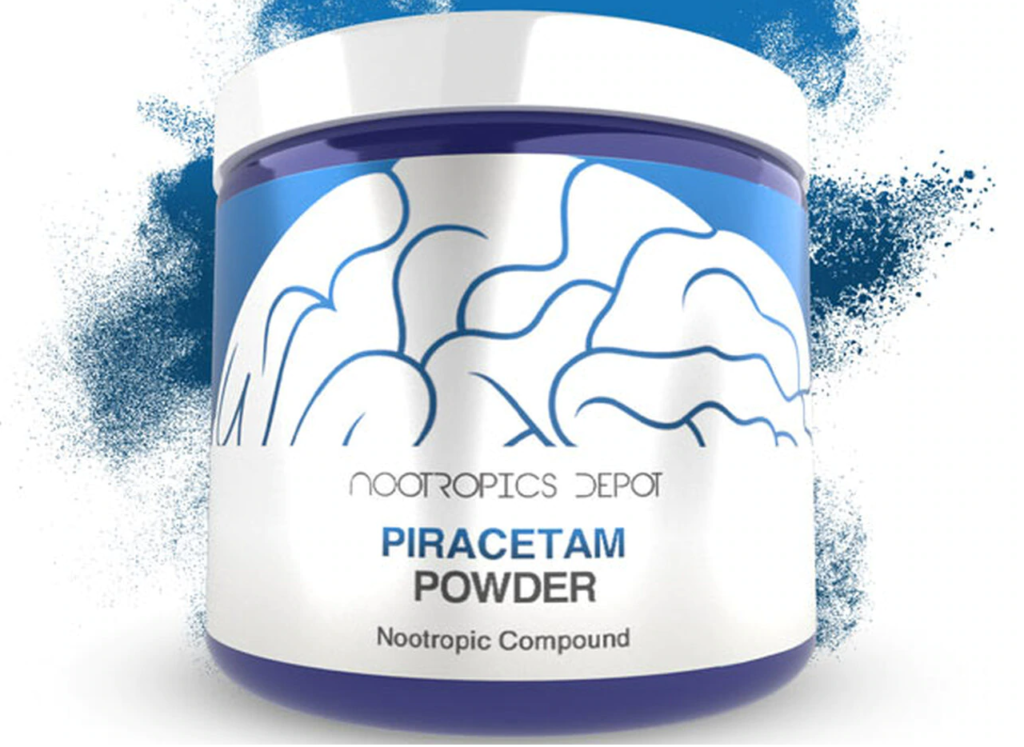
[q]
First created in the 1960s to treat motion sickness, this grand-daddy of the nootropics has been used and studied as a memory and learning enhancer since 1971. It is a classic to start with when looking into the burgeoning arena of synthetic nootropics. It is a synthetic derivative of the neurotransmitter GABA, which slows neural activity, but doesn’t appear to have similar effects to GABA; it is still unclear how it really works. It appears to be more effective in the elderly and those with cognitive impairment. [15]
Its younger brother aniracetam is also widely used. Both are stimulants used for alertness, and are also used in central nervous system diseases like dementia and Alzheimer’s. They also have benefits for depression, and possibly anxiety. [15]
It appears piracetam may work by making cell membranes more fluid and able to communicate. It may also increase blood supply to the brain, and increase glucose and oxygen consumption in the brain. [15]
Good for:
-Learning and memory
-Alertness
-Reducing depression and anxiety
Downsides:
-May interact with medications
Typical dose: 1 – 5 g daily
16. Choline
Glycerylphosphorylcholine is one form of choline nootropic users take, others take direct choline supplements like choline bitartrate or choline citrate [r]
Choline is actually an essential vitamin, recently recognized as such in 1998. It is found in “brain foods” like eggs, beef, salmon, and cauliflower. It could belong in the nutrient-based nootropics above, but is so commonly stacked with piracetam and other designer nootropics that it is included here.
Choline is required for the functioning of the liver, brain, muscles, and for cellular metabolism and energy production. Your brain uses large amounts when it creates the neurotransmitter acetylcholine, essential for attention, focus, memory, mood, thinking, and sleep – your brain can’t function at all without it.
Piracetam increases the effects of acetylcholine and aniracetam release more acetylcholine. Both seem to increase cellular demand for choline. Using racetams without enough choline may even lead to the common racetam headaches due to lack of choline. All nootropics in the racetam family work in some way by affecting acetylcholine.
Alone, choline can enhance alertness, mental energy, memory, and recall time. Stacked with racetams, it has enhanced effects, especially on memory.
Good for:
-Preventing neurodegenerative symptoms, improving impaired memory
-Memory and recall time in healthy people
-Mental energy
-Focus and attention
-Stacking with other designer nootropics
Downsides:
-Too much may cause irritability, anger, anxiety/depression, confusion, fatigue and other effects
Typical dose:
-RDI for choline is around 500 mg daily – each form of choline nootropic has a different % of choline by weight and a different bioavailability. For this reason, each choline nootropic will have a different recommended dose.
-Ex: Citicoline is taken in approximately 1 g / day, though do not take this dose without proper research. Even citicoline comes in different forms, for example citicoline sodium
- Noopept
[s]
Also known affectionately as N-phenylacetyl-L-prolylglycine ethyl ester, noopept has a similar effect to piracetam. It appears to have neuroprotective effects in those with cognitive impairment from oxidative stress or physical trauma [17]. In healthy people, there is not yet evidence that it improves cognitive performance. In animal studies, it shows promise in boosting BDNF, which promotes growth of new brain cells. It also shows the ability in animals to speed up memory retrieval [16].
There are claims that it is anti-inflammatory, anti-anxiety, and acts as an antioxidant. Much more research is needed to understand how effective noopept really is [18]
Good for:
-Helping recover from brain injury
-May improve memory
-Acts in minutes
Downsides:
-Not well understood or researched yet
Typical dose: 10 – 30mg
The world of designer nootropics is complex and new. For a deeper dive on them, check out the website Nootropics Expert.
Stacking
Caffeine and L-theanine work better together than they do individually. If you drink coffee every morning, and you decide to add some L-theanine onto that, you’re “stacking” these two nootropics. Many nootropics appear to boost each other, including multiple different combinations of the above. Another common combination is piracetam and choline, known to work together to boost memory.
We recognize both the allure of stacking, and advise you to do your research before trying a combination that is new to you, especially with less well understood designer drugs and psychoactive drugs like psilocybin mushrooms.
There are also many pre-made stacks sold by companies specializing in doing the leg work for you under names like Qualia Mind or Alpha Brain.
Other Ways to Be Smarter
[g]
At UpRiver, we like to think about the bigger picture, and the fact is that when it comes to improving mentally you want to make sure your foundation is well-built before you move on to the finer details.
A lot of the time, these nootropics work much better once you’re already in a good state to begin with. If you’re not feeling sharp and motivated, you may find they don’t really do all that much for you.
Before you delve into nootropics, we recommend you checkout our diet, sleep, mindset, and exercise streams here as these will give you the best bang for your buck and hit more “upstream” in your biochemistry. After you’ve got a handle on these, trying nootropics to gain an additional edge makes sense.
Specific strategies we might recommend include cardio and resistance training regularly, including nutrient dense foods in your diet, meditating, trying out a ketogenic diet or carnivore diet, improving your microbiome, and alternating between focused and diffuse learning.
Conclusion
Nootropics are any substance that improves mental performance, be it a nutrient, medicinal herb or synthetic chemical. People typically use them to be more productive or creative. Nootroipcs do work, they just won’t make you a genius. Some work by improving memory and learning, and others improve your mood and energy levels – each works differently.
Of the 17 discussed above, some are categorized as nutrient-based, some as adaptogens, some as stimulants, and some as designer drugs. They each work differently, and may work better for different people. It is popular to “stack” multiple nootropics together to achieve even greater effects. Some nootropics are illegal, prescription, or otherwise unsafe for recreational use. Do your own research.
Start with a good foundation of diet, exercise, and sleep to grab all of the low hanging fruit in terms of mental performance before trying nootropics.
Note: link from modafinil and caffeine article to this one
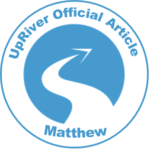
References:
[1] https://www.mdlinx.com/article/studies-show-these-2-diets-can-boost-brain-power/3ffWfCQwnpLZ51wsC2Ofv0
[2] https://www.globenewswire.com/news-release/2020/02/19/1987135/0/en/Nootropics-Market-To-Reach-USD-5-32-Billion-By-2026-Reports-And-Data.html
[3] https://harmreductionjournal.biomedcentral.com/articles/10.1186/s12954-019-0308-4
[4]https://pubmed.ncbi.nlm.nih.gov/20182035/#:~:text=Caffeine%20facilitates%20performance%20in%20tasks,found%20improvements%20in%20reaction%20time.
[5] https://wholisticresearch.com/best-nootropics-for-mood/
[6] https://pubmed.ncbi.nlm.nih.gov/29704637/
[7] https://www.sciencedaily.com/releases/2003/08/030813070944.htm
[8] https://www.healthline.com/nutrition/best-nootropic-brain-supplements#TOC_TITLE_HDR_2
[9] https://nootropicsexpert.com/13-vitamins-essential-for-the-optimized-brain/#vitamin-e
[10] https://www.neurohacker.com/formulation/acetyl-l-carnitine
[11] https://www.healthline.com/nutrition/12-proven-ashwagandha-benefits#1.-Is-an-ancient-medicinal-herb
[12] https://www.healthline.com/nutrition/rhodiola-rosea
[13] https://www.healthline.com/nutrition/bacopa-monnieri-benefits#TOC_TITLE_HDR_7
[14] https://www.healthline.com/nutrition/ginkgo-biloba-benefits#TOC_TITLE_HDR_15 [15] https://www.healthline.com/nutrition/piracetam
[16] https://www.healthline.com/nutrition/nootropics#TOC_TITLE_HDR_10
[17] https://examine.com/supplements/noopept/
[18] https://selfhacked.com/blog/benefits-experiences-noopept/
Images
[a] https://lifethroughamathematicianseyes.files.wordpress.com/2016/08/gwh-00079.jpg?w=736
[b] https://www.google.com/search?q=nootropics&rlz=1C1CHBF_enCA741CA741&prmd=svin&sxsrf=ALeKk00rjbwiEGhorpl_ykzuOsjOvpYkDw:1619559825791&source=lnms&tbm=isch&sa=X&ved=2ahUKEwi58e7Asp_wAhWRB80KHWBcAQYQ_AUoA3oECAEQAw&biw=1920&bih=947#imgrc=1MB3n2SIIYznWM
[c] https://hhp-blog.s3.amazonaws.com/2021/03/GettyImages-1278940460.jpg
[d] https://cdn.shopify.com/s/files/1/0175/2232/articles/blog_adaptogens_1024x.jpg?v=1524366300
[e] https://assets.teenvogue.com/photos/5a4a51896f6c5f43f751dd73/16:9/w_2560%2Cc_limit/1217-TV-CUAU10-01.jpg
[f] https://media-exp1.licdn.com/dms/image/C4D12AQGoohUGCIhvjA/article-cover_image-shrink_600_2000/0/1591273044838?e=1622678400&v=beta&t=U2KghQTcuwjHwM8nxx26qhENX2rczKCySv-ubYM0SI4
[g] https://winmr.com/wp-content/uploads/2019/04/health-wellness.jpg
[h] https://www.google.com/url?sa=i&url=https%3A%2F%2Frenuerx.com%2Fwhich-vitamin-b-gives-you-energy%2F&psig=AOvVaw3y_TGkwFx94qxEqC22xslK&ust=1619710894915000&source=images&cd=vfe&ved=0CAIQjRxqFwoTCIDjo7ijofACFQAAAAAdAAAAABAD
[i] https://www.evidentlycochrane.net/wp-content/uploads/2015/04/iStock_fishoil_Medium.jpg
[j] https://post.healthline.com/wp-content/uploads/2020/09/mct-oil-benefits-1200×628-fb-1200×628.jpg
[k] https://sc04.alicdn.com/kf/HTB1qUzDlbArBKNjSZFLq6A_dVXal.jpg
[l] https://hips.hearstapps.com/hmg-prod.s3.amazonaws.com/images/young-man-preparing-his-protein-drink-royalty-free-image-618752694-1551094694.jpg?crop=1xw:0.75035xh;center,top&resize=1200:*
[m] https://www.google.com/url?sa=i&url=https%3A%2F%2Fmedium.com%2F%40thegregjames%2Falcar-the-number-one-fat-loss-supplement-you-should-be-using-e7f005209d1f&psig=AOvVaw27zgbdvuFV8JzBv9rW2iD4&ust=1619714294562000&source=images&cd=vfe&ved=0CAIQjRxqFwoTCOCrvYuwofACFQAAAAAdAAAAABAD
[n] https://cdn-a.william-reed.com/var/wrbm_gb_food_pharma/storage/images/publications/food-beverage-nutrition/nutraingredients-usa.com/news/suppliers/ashwagandha-finds-itself-in-the-right-place-at-the-right-time/11691985-1-eng-GB/Ashwagandha-finds-itself-in-the-right-place-at-the-right-time_wrbm_large.jpg
[o] https://a99d9b858c7df59c454c-96c6baa7fa2a34c80f17051de799bc8e.ssl.cf1.rackcdn.com/images/supplement-rhodiola-rosea.jpg
[p] https://selfhacked.com/app/uploads/2016/05/BacopaMonnieri.jpeg
[q] https://www.gardeningknowhow.com/wp-content/uploads/2020/11/ginkgo-biloba-tree.jpg
[r] https://www.bulletproof.com/wp-content/uploads/2018/12/lions-mane-header.jpg
[s] https://www.google.com/url?sa=i&url=https%3A%2F%2Fwww.news-medical.net%2Fnews%2F20210216%2FDaily-caffeine-consumption-can-change-the-gray-matter-of-the-brain.aspx&psig=AOvVaw1fTHfK8fK85jacPhfzML-I&ust=1619720984555000&source=images&cd=vfe&ved=0CAIQjRxqFwoTCKCqsIPJofACFQAAAAAdAAAAABAD
[t] https://www.alzdiscovery.org/uploads/cognitive_vitality/Report_Modafinil.jpg
[q] https://cdn11.bigcommerce.com/s-cebedmpn/images/stencil/1280×1280/products/162/2500/buy-piracetam-powder__35813.1611096035.jpg?c=2?imbypass=on
[r] https://cdn.shopify.com/s/files/1/0060/9920/6178/files/Synthesis_of_choline_from_citicoline.png
[s] https://upload.wikimedia.org/wikipedia/commons/4/49/Noopept_structure.png
